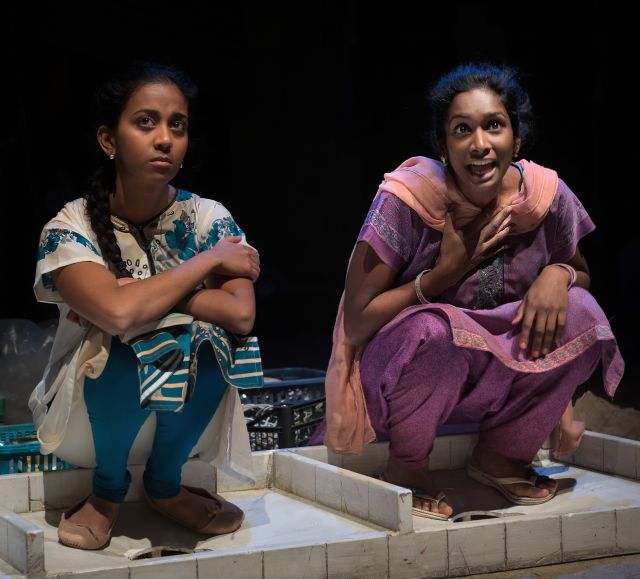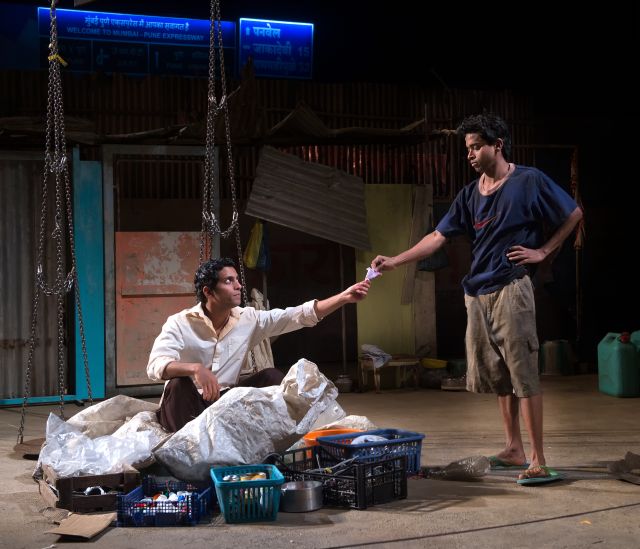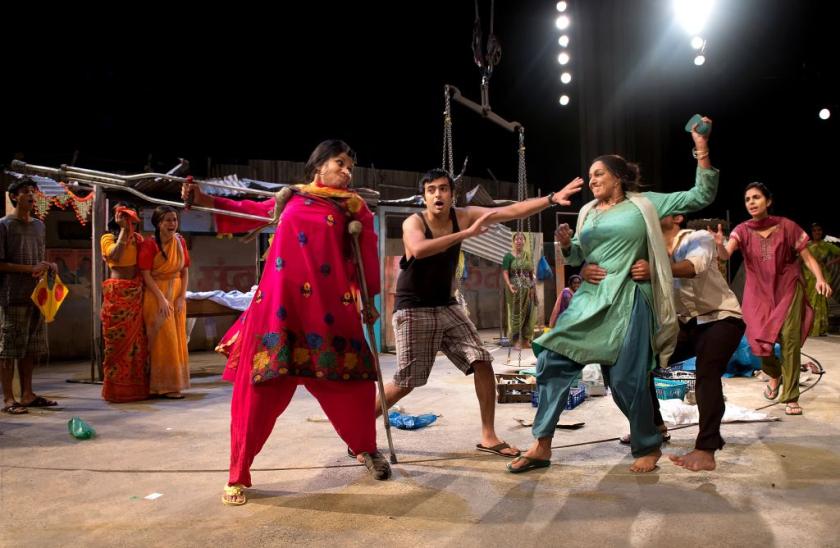Behind the Beautiful Forevers, David Hare's adaptation of Katherine Boo's Pulitzer Prize-winning book, works as both play and portent. Viewed on its own terms, the evening grips throughout in its embrace of the multiple contradictions of contemporary Indian life as here filtered through those existing quite literally off the scrap of that country's gathering economic power. Even more importantly is what Rufus Norris's epic staging – this director's most confident work yet at this address – may signal about the sort of National Theatre we have in store when Norris launches his artistic directorship for good in the spring.
There has been some concern expressed – not least from Norris himself – about his lack of experience in the classical canon, to which Beautiful Forevers represents an immediate rebuke. Productions of, say, Hamlet are a dime a dozen, but how many people could pull off an evening on this scope and scale with such dispatch? The project, too, has unleashed an energy that hasn't always been evident in Hare's work of late. And if an incident-packed second half sometimes seems to be moving from climax to climax, that gathering urgency only amplifies one's engagement with a cross-section of characters whom one doesn't encounter often on this or any stage.
 The American journalist Boo spent well over three years in the Mumbai slum of Annawadi, chronicling the citizenry with a detail that gives a piece of concerted non-fiction a novelistic, even Dickensian feel. How, then, to bring both people and events into manageable theatrical form? Hare deftly fillets his source material and allows Norris's acute eye (and a truly exemplary cast) to do the rest. Early worries that a parade of characters speaking in direct address to the audience would result in the story feeling as if it were being narrated as opposed to dramatised soon fall away – so much so, in fact, that a rather abrupt ending leaves one wondering what has since happened to a half-dozen or more people whose fates we have come very much to care about.
The American journalist Boo spent well over three years in the Mumbai slum of Annawadi, chronicling the citizenry with a detail that gives a piece of concerted non-fiction a novelistic, even Dickensian feel. How, then, to bring both people and events into manageable theatrical form? Hare deftly fillets his source material and allows Norris's acute eye (and a truly exemplary cast) to do the rest. Early worries that a parade of characters speaking in direct address to the audience would result in the story feeling as if it were being narrated as opposed to dramatised soon fall away – so much so, in fact, that a rather abrupt ending leaves one wondering what has since happened to a half-dozen or more people whose fates we have come very much to care about.
And though the material might seem geographically and temperamentally removed from the habitual terrain of a dramatist who has spent his career (much of it at the National) chronicling what he has called "the loveless English", Hare gracefully elides any perceived divide. It's not just that the Hare-isms are there to be spotted: a line about needing only one good student to make a teacher's life worthwhile echoes a sentiment previously expressed in Skylight. But the larger themes of dislocation and loss, whether familial or economic, have coursed through Hare's work from the outset, an earlier Indian-set play (A Map of the World, from 1982) indicating something of the global reach that Behind the Beautiful Forevers follows up on with real force.
The landscape here is rife with the same clashes of class, caste, and financial circumstance that Hare has long anatomised on home turf. The specifics, though, have been displaced a continent away to a rubbish-strewn Mumbai community lying beneath the airport flight path in which a neighbourly grievance escalates into a wider tragedy that ends by putting an entire way of life on trial. Such Englishness as there is arises out of the desire of the education-minded young Manju (a charming Anjana Vasan, pictured above left), daughter of the local fixer Asha (Stephanie Street), to try to come to grips with the plot of Mrs Dalloway. A subsequent conversation about the nomenclature in Congreve's The Way of the World – of all unlikely topics – delights by dint of its very incongruousness.
And while the younger men at the same time scramble to get by as either "sorters" or "keepers" of the detritus that is their environmental lot, the imposing matriarch, Zehrunisa (a fierce-eyed Meera Syal, the name player in a cast that is notable throughout), finds herself at grievous odds with the vengeful, one-legged Fatima (Thusitha Jayasundera, here marking her second David Hare play in a row), the prostitute who lives on the other side of the kitchen wall. As free with her body as the sweary Zehrunisa is with her tongue (between this and the Sophie Stanton character in Made in Dagenham, onstage expletives are quite the thing at the moment), Fatima turns galloping envy into an act of self-immolation that threatens ruin on multiple fronts and lands Zehrunisa's eldest son, Abdul (Shane Zaza, in a breakout performance), in the legal dock.
 The first half so skilfully weaves together the narrative strands that one feels after the interval as if all involved are having to compress the various stories unduly in order not to turn a three-hour play into a TV mini-series. But that sense of excess in its way also honours surely the largest and best Asian ensemble the National has ever hosted, all of whom compel attention and make one wish for yet more time in their company. Playing a sort of inverse Candide hard-scrabbling his way through this worst of all possible worlds in perpetual hope of betterment and self-improvement, Zaza anchors proceedings with unshowy ease, leaving the greater pyrotechnics to the endearingly rabid Hiran Abeysekera as Sunil, the most determinedly agile of the scavengers attempting to spin refuse into gold. (The two actors are pictured above.)
The first half so skilfully weaves together the narrative strands that one feels after the interval as if all involved are having to compress the various stories unduly in order not to turn a three-hour play into a TV mini-series. But that sense of excess in its way also honours surely the largest and best Asian ensemble the National has ever hosted, all of whom compel attention and make one wish for yet more time in their company. Playing a sort of inverse Candide hard-scrabbling his way through this worst of all possible worlds in perpetual hope of betterment and self-improvement, Zaza anchors proceedings with unshowy ease, leaving the greater pyrotechnics to the endearingly rabid Hiran Abeysekera as Sunil, the most determinedly agile of the scavengers attempting to spin refuse into gold. (The two actors are pictured above.)
I had some concerns in advance that this might be one of those occasions in which we are aware of money being conspicuously spent to replicate the conditions of poverty, though in fact Katrina Lindsay (sets) and Paule Constable (lighting) between them navigate the difficult task of depicting conditions without prettifying them. And Norris artfully but never over-pictorially does the rest, moving from monsoon conditions to the separate shower from up in the flies of a cascade of plastic, from the intimate to the epic and back again with near-cinematic ease. In so doing, he reminds us that the National's implicit remit, its name notwithstanding, has always embraced the international, as well. Seen from that perspective and others, as well, Behind the Beautiful Forevers marks quite a beginning.















Add comment